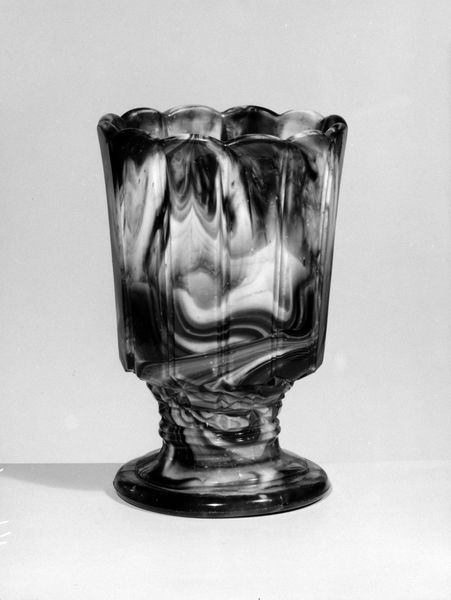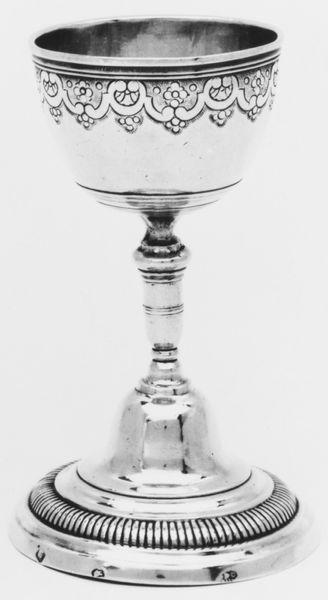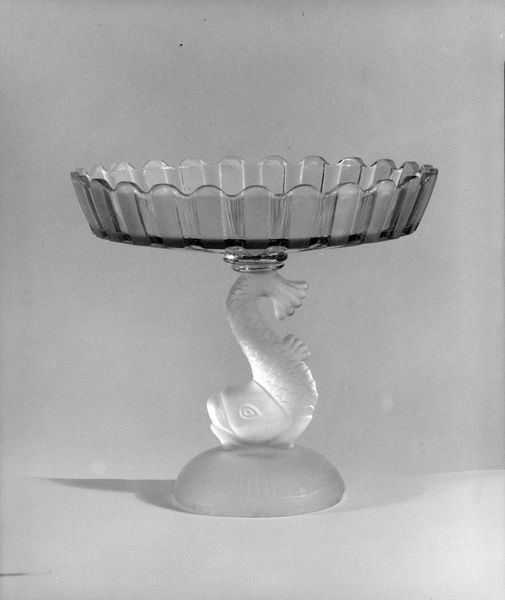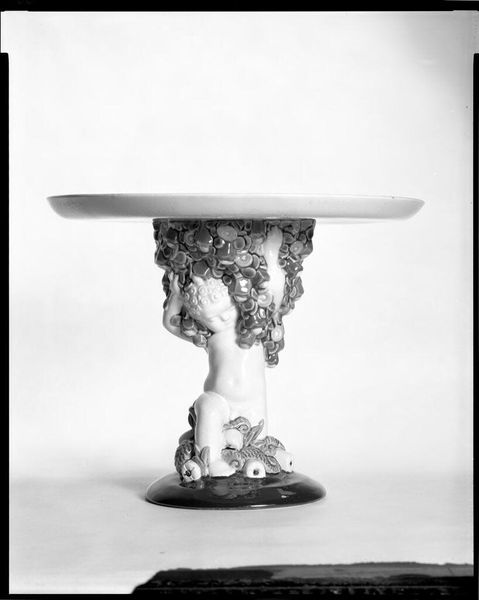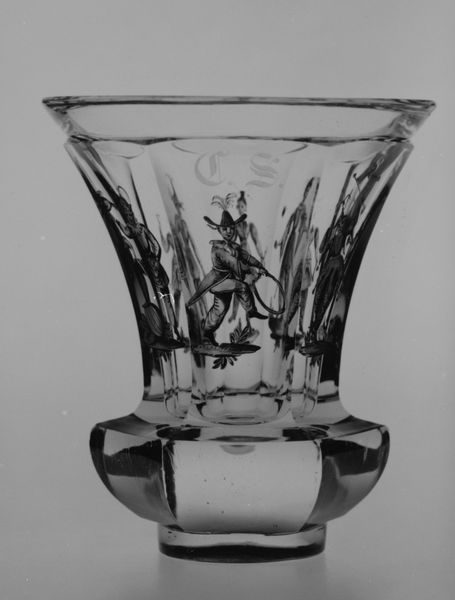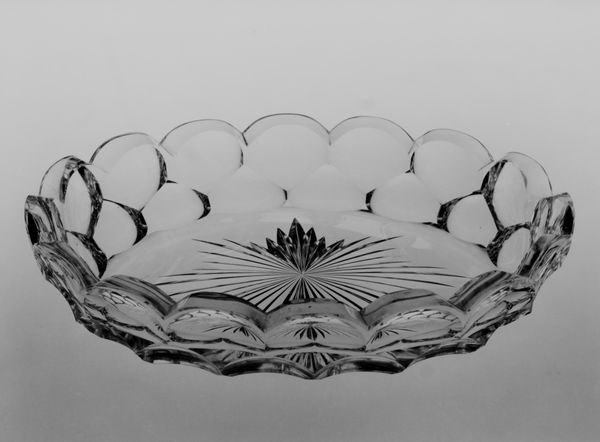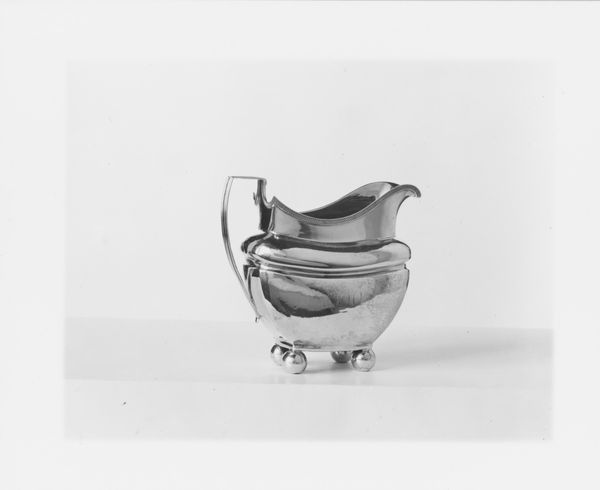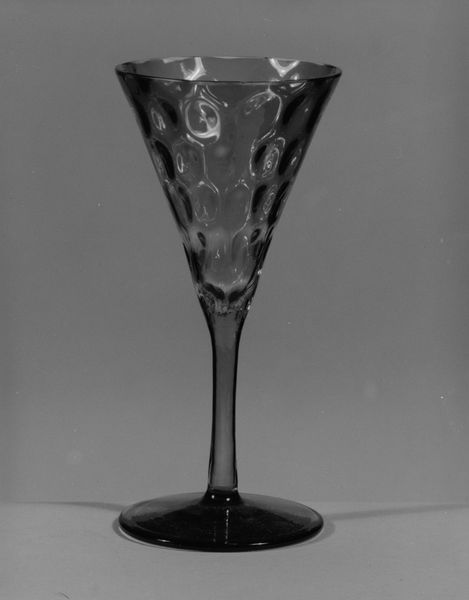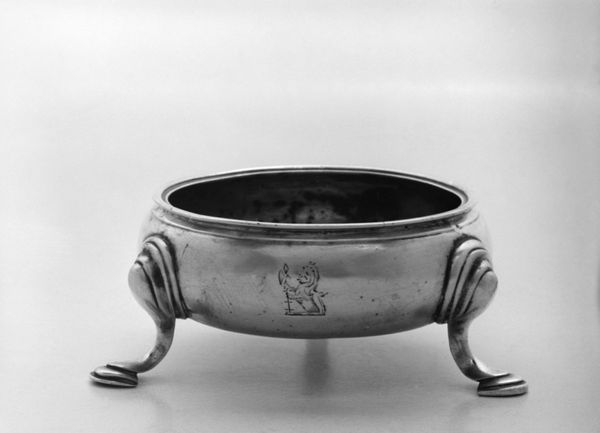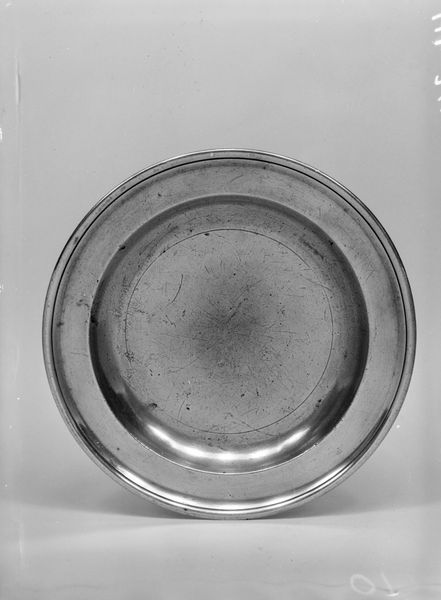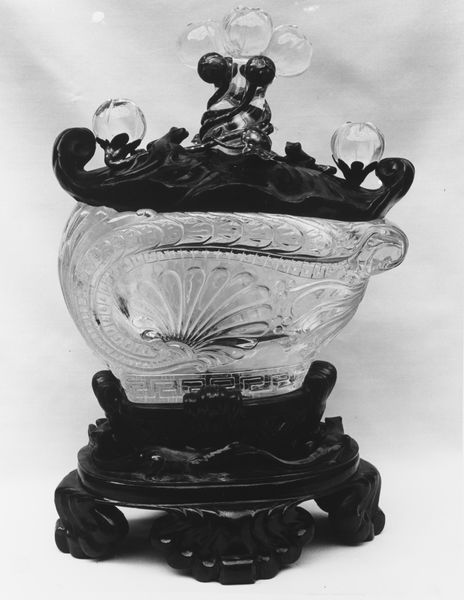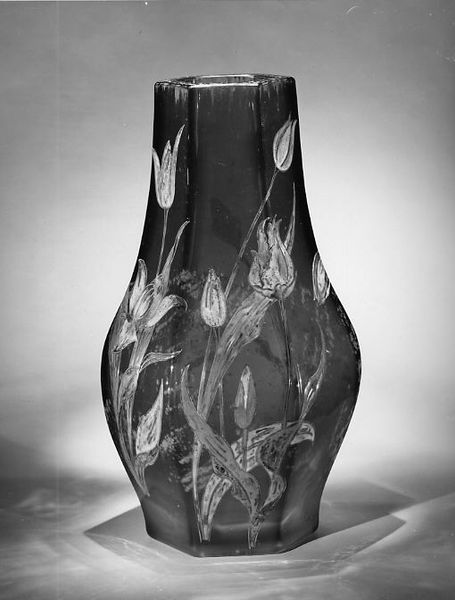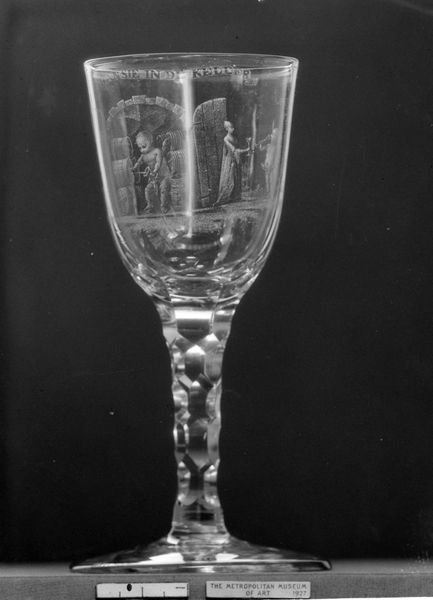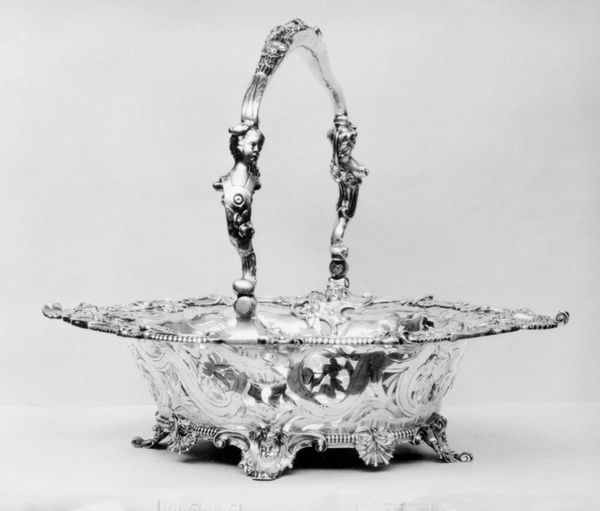
silver, metal, sculpture
#
silver
#
baroque
#
metal
#
sculpture
#
sculpture
#
black and white
#
decorative-art
Dimensions: Height: 11 1/8 in. (28.3 cm)
Copyright: Public Domain
Curator: This elaborate "Standing Cup" dates to 1665-1670 and is attributed to Johann I Seutter. It is crafted from silver, a metal vessel of incredible skill that reflects Baroque ideals. Editor: It looks remarkably opulent, almost excessively so. The sculpture teeters on the edge of gaudiness. I'm struck by the tension between the heaviness of the material and the seemingly effortless pose of the figures. Curator: The piece exists at an interesting point in Dutch and broader European social dynamics. Consider who was drinking from it. It speaks to the conspicuous consumption of the rising merchant class who sought ways to communicate status. The object served as a silent declaration, but how valid was it? What socio-economic systems was this visual performance dependent upon? Editor: Right, it begs the question of who made it and under what conditions. The labour required to transform raw silver into this intricate cup – who were the metalworkers and what were their lives like? I can only imagine this involved incredibly precise silversmithing, raising, chasing and engraving...all those labour hours are embedded in the final product. It makes you consider craft traditions and the complex relations between the artists and the economy they inhabit. Curator: Exactly, and how does the very form contribute to those statements? A single, athletic figure seems burdened, forced into an aesthetic posture. How might we interpret that pose, or perhaps challenge its presumed heroic qualities, given our contemporary awareness of physical labor? This era promoted forms of visual entertainment and amusement in drinking rituals, and here that is manifested as an uneven relationship. Editor: Indeed, and to add to this complexity, silver as a material had an almost alchemical draw: both precious and functional. But beyond the material, let's not forget the floral motifs and figurative embellishments—how they elevate this functional object to the status of high art. Curator: True. These details signal wealth and a kind of cultivated sensibility—access to the aesthetic beauty and cultural capital in that era. It is fascinating to think about this object now. Can an object originally created for a limited audience open up conversations about those in the past who created it? And more radically, in what ways could it reshape current dialogues and actions surrounding contemporary craft production? Editor: It's an enduring reminder of how art, even something seemingly straightforward, is actually entangled with labor, material culture, and complex class dynamics. Curator: A multi-layered relic of social and creative relationships.
Comments
No comments
Be the first to comment and join the conversation on the ultimate creative platform.
